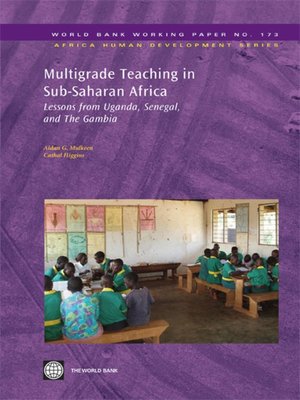Multigrade Teaching in Sub-Saharan Africa
ebook ∣ Lessons from Uganda, Senegal, and The Gambia · World Bank Working Papers
By Aidan G Mulkeen

Sign up to save your library
With an OverDrive account, you can save your favorite libraries for at-a-glance information about availability. Find out more about OverDrive accounts.
Find this title in Libby, the library reading app by OverDrive.



Search for a digital library with this title
Title found at these libraries:
| Library Name | Distance |
|---|---|
| Loading... |
In Africa, with the expansion of coverage of primary education in recent decades, many of the remaining out-of-school children are in hard to reach areas, with low population density and poor transport. Providing access to education is challenging in such contexts, as the population in any village is often too small to support a conventional primary school. One of the answers is the use of multigrade teaching, where one teacher works with students of two or more grades.
This paper examines the practice of multigrade teaching in three African countries, Uganda, Senegal, and The Gambia. Although these three cases had very different approaches to multigrade, their experiences suggest that multigrade teaching is a promising and cost-effective option, but that successful implementation requires sustained support from policymakers, adequate training of teachers, and careful explanation of the approach to parents and the communities.







